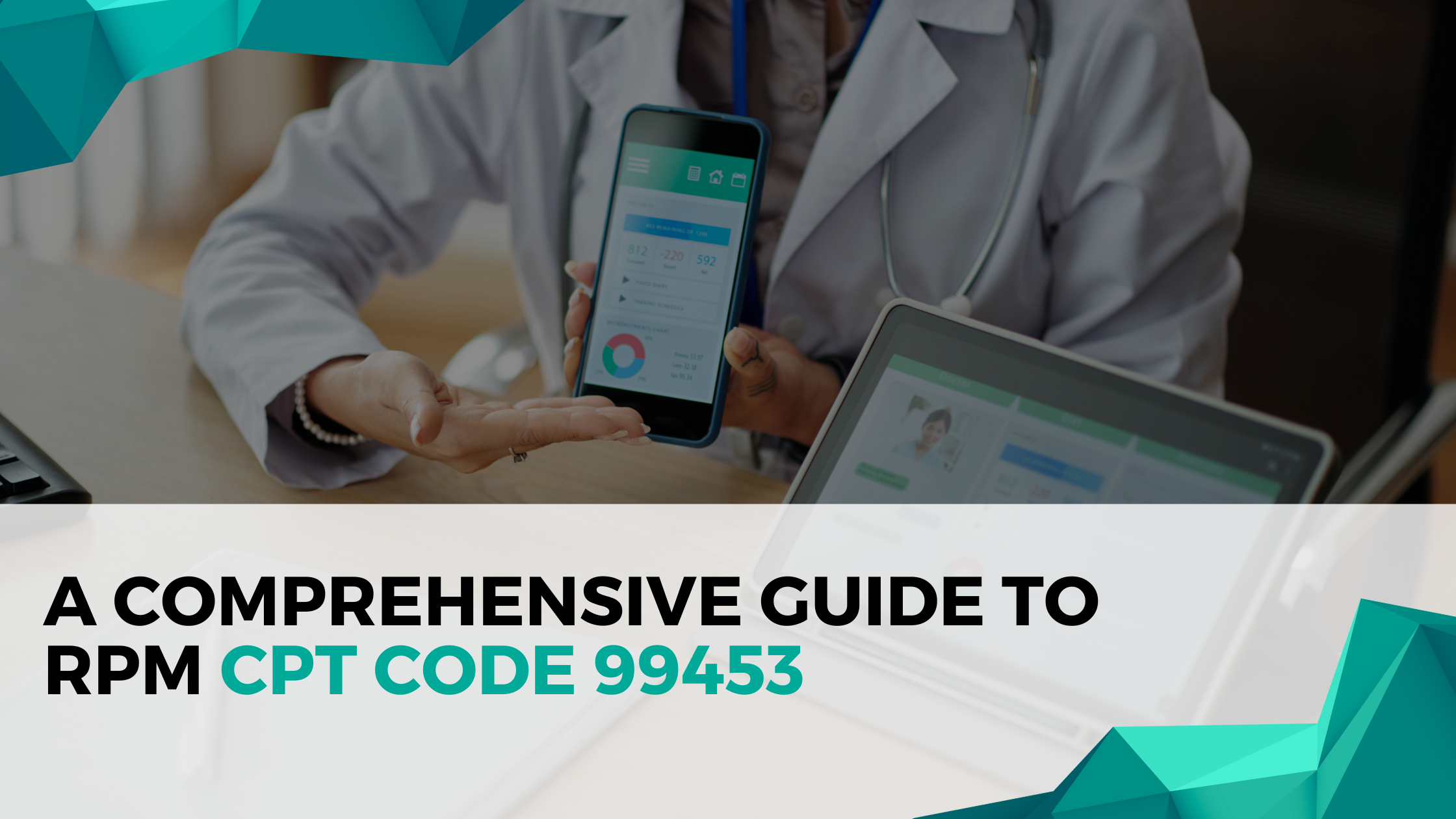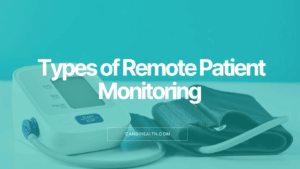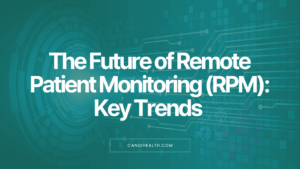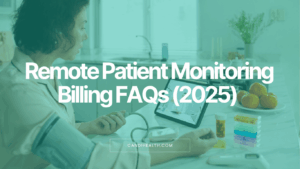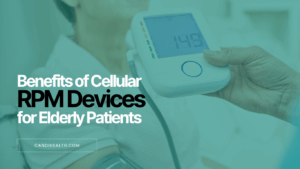Remote Patient Monitoring (RPM) has become a critical part of modern healthcare, especially for managing chronic conditions outside the clinical setting. RPM billing typically involves a series of specific CPT codes set by Centers for Medicare and Medicaid Services. These codes include 99453 (initial setup), 99454 (device supply and data transmission), 99457 and 99458 (clinical monitoring time).
Among these codes, CPT Code 99453 is one of the foundational billing codes that ensures providers are reimbursed for onboarding patients into an RPM program. This code specifically covers the one-time service of setting up the monitoring device and training the patient on how to use it.
Table of Contents
What Does RPM CPT Code 99453 Cover?
CPT Code 99453 is used to bill for the initial work required to start Remote Patient Monitoring services. This includes setting up the monitoring device and educating the patient on how to use it. The service is billed only once per episode of care, regardless of the number of devices involved.
To bill CPT 99453, the following activities are generally included:
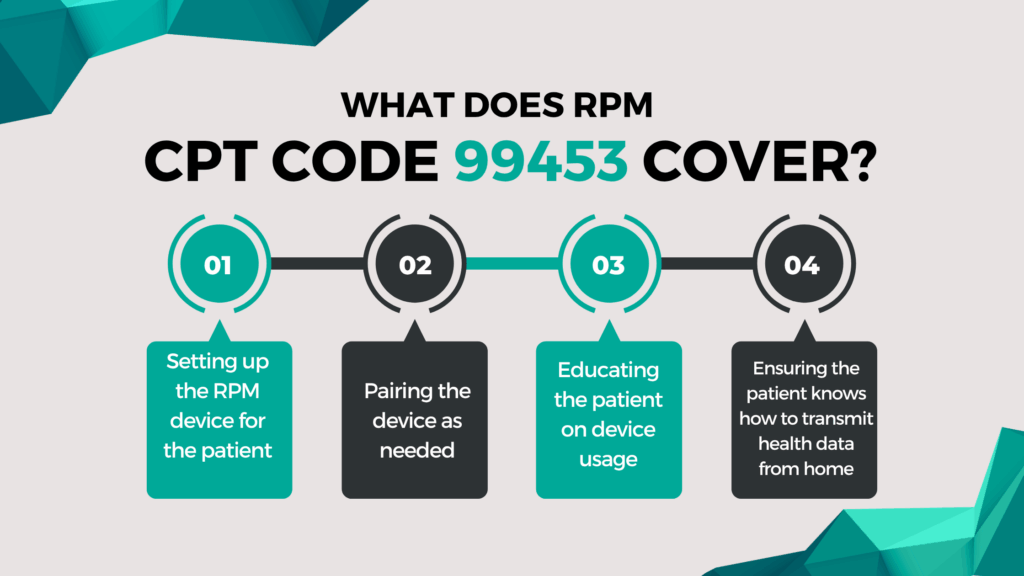
The device must meet the definition of a medical device as classified by the FDA, and the service must be provided in support of ongoing RPM monitoring.
Key point: This code is billed only once per patient per episode, even if multiple devices are provided.
Who Can Bill CPT Code 99453?
CPT Code 99453 can be billed by healthcare professionals who are eligible to report evaluation and management (E/M) services. This includes physicians and non-physician practitioners such as nurse practitioners (NPs) and physician assistants (PAs).
The actual work of setting up the device and training the patient may be done by clinical staff, but the billing must be submitted under the supervising provider’s National Provider Identifier (NPI).

Requirements:
- The service must be provided under the general supervision of the billing provider.
- The provider must have an established relationship with the patient.
- The setup and training must be part of a planned RPM program.
Device vendors, third-party service providers, and independent contractors cannot bill CPT Code 99453 directly. Only healthcare professionals enrolled with Medicare or other payers and authorized to bill E/M services are allowed to report this code.
What Type of RPM Devices Qualify for CPT Code 99453?
CPT Code 99453 applies only when the patient is provided with a medical-grade device that meets the definition of a FDA-approved medical device. These devices must be capable of automatically recording and transmitting physiological data without manual input from the patient.
Common Examples of Qualifying RPM Devices:
- Blood pressure monitors
- Glucometers (for blood glucose monitoring)
- Pulse oximeters (SpO2)
- Digital weight scales
- Thermometers
- Spirometers (for lung function)
- ECG monitors
- Continuous glucose monitors (CGMs)
Consumer fitness trackers and mobile apps that rely on manual data entry do not qualify for use under CPT 99453. Devices must support automated, daily data transmission for use in RPM programs recognized by Medicare or commercial payers.
Billing Requirements for CPT Code 99453
CPT Code 99453 is billed for the initial setup of a remote monitoring device and the training provided to the patient or caregiver on its use. This code is billed only once per episode of care, and it must be part of a legitimate Remote Patient Monitoring (RPM) program.
While 99453 does not require 16 days of data collection on its own, Medicare typically expects this code to be billed in connection with CPT Code 99454. That means if a provider bills 99453, they should also bill 99454 in the same 30-day period — and 99454 does require that the patient transmits data for at least 16 days during that period.
Note: If 99454 is not billed, Medicare may reject the claim for 99453, even though the code itself doesn’t include the 16-day rule in its definition.
Medicare Reimbursement for CPT 99453
Medicare provides a one-time reimbursement for CPT Code 99453 to cover the work involved in setting up the device and educating the patient. The payment is intended to offset the administrative and clinical time required at the start of a Remote Patient Monitoring (RPM) program.
National Average Medicare Reimbursement Rate
As of the most recent CMS Physician Fee Schedule, the national average Medicare reimbursement rate for CPT Code 99453 is $19.73.
The exact rate depends on the provider’s location and local Medicare Administrative Contractor (MAC).
While the payment for 99453 is relatively low compared to ongoing RPM codes, it represents the starting point for RPM reimbursement. After billing 99453, providers typically bill:
- 99454 for monthly device supply and data transmission
- 99457 and 99458 for time spent on patient monitoring and management
Billing 99453 correctly ensures the RPM program is structured in compliance with Medicare requirements from the beginning.
Common Billing Mistakes to Avoid
Billing CPT Code 99453 may seem straightforward, but small errors can lead to claim denials. Below are common mistakes that providers should avoid to stay compliant:
1. Billing Without 99454
Many payers, including Medicare, expect 99453 to be billed in combination with CPT 99454. If the 16-day data requirement for 99454 is not met, the claim for 99453 may be denied.
2. Submitting More Than Once per Episode
CPT 99453 is only reimbursed once per episode of care. Billing it multiple times without a new, eligible episode (such as a discharge and restart) is not allowed.
3. Billing Without Patient Consent
Billing without documenting verbal or written consent from the patient is a compliance issue. Consent must be secured before any services begin.
4. Using Non-Qualified Devices
The device must meet the definition of a medical-grade device regulated by the FDA. Consumer wearables or apps without regulatory approval do not qualify.
5. Insufficient Documentation
Lack of clear records for device setup, patient training, or supervision can result in audit issues or claim denials. Documentation should include date of service, provider details, and a summary of the training provided.
CPT 99453 vs. Other RPM Codes
Each CPT code in Remote Patient Monitoring serves a specific purpose. CPT 99453 covers the initial setup, while other codes handle device supply, data transmission, and ongoing clinical monitoring.
| CPT Code | Service Covered | When to Bill | Key Requirement |
| 99453 | Device setup and patient education | Once per care episode | Device must be medical-grade; training must be documented |
| 99454 | Device supply and data transmission | Monthly | At least 16 days of data in a 30-day period |
| 99457 | First 20 minutes of monitoring time | Monthly | Interactive communication with the patient |
| 99458 | Each additional 20 minutes of monitoring | Monthly (add-on to 99457) | Used if monitoring exceeds 20 minutes |
Final Thoughts
CPT Code 99453 is the first billing step in a compliant Remote Patient Monitoring program. It covers the setup of a medical-grade device and patient education, and it must be billed correctly to ensure proper reimbursement and avoid issues with payers.
Although it’s a one-time code with a relatively small payment, it plays a key role in establishing RPM services. By understanding the requirements, documenting thoroughly, and aligning with related codes like 99454 and 99457, healthcare providers can use CPT 99453 effectively and responsibly.
If your clinic is looking to implement a compliant and efficient RPM program, CandiHealth offers a complete solution — including automated billing support for CPT codes like 99453, FDA-compliant devices, and real-time monitoring dashboards.
Get in touch with CandiHealth to simplify your RPM workflow and stay compliant from day one.
Related Articles
Remote Patient Monitoring CPT Codes: Billing & Compliance Guide
Frequently Asked Questions (FAQs)
What is CPT code 99453?
CPT Code 99453 is used to bill for the one-time setup of a remote monitoring device and training the patient or caregiver on how to use it as part of a Remote Patient Monitoring (RPM) program.
How often can 99453 be billed?
99453 can be billed once per episode of care. If the patient is discharged and later re-enrolled in RPM, it may be billed again for the new episode.
What is the difference between 99453 and 99454?
99453 covers device setup and patient education. 99454 covers monthly device supply and data transmission, and it requires at least 16 days of readings in a 30-day period.
What is CPT code 99453 99454 99458?
These are part of RPM billing:
99453: Initial device setup and training
99454: Monthly device supply and data transmission
99458: Additional 20 minutes of clinical monitoring time beyond the first 20 (billed with 99457)

